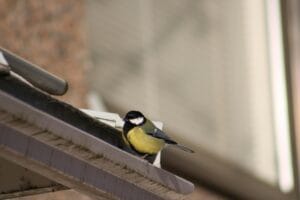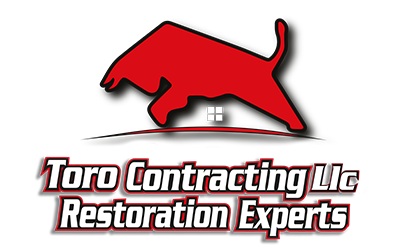If you’ve ever wondered about smarter, greener ways to manage rainwater, this article is your ultimate guide. We’ll dive deep into the different eco-friendly gutters options available today, from materials made with recycled content to innovative designs that reduce water waste. Along the way, you’ll discover the tangible benefits these choices offer, such as reducing your carbon footprint, enhancing durability, and even saving you money in the long run.
Key Takeaways
Eco-friendly gutters use sustainable materials (e.g., recycled aluminum, copper, zinc, or recycled-content vinyl) to minimize environmental impact.
These gutter systems support water conservation by facilitating rainwater harvesting, reducing stormwater runoff, and lowering water bills.
Selecting the right material requires considering factors like local climate, rainfall intensity, roof size, and budget.
Proper installation—including the correct slope, secure hangers, and sealed connectors—maximizes durability and performance.
Regular maintenance (cleaning, leak checks, and bracket inspections) ensures long-term effectiveness and prevents water damage.
Integrating eco-friendly gutters with rainwater collection systems enhances sustainability and can reduce dependence on municipal water.
Choosing durable, recyclable materials (copper, zinc, or recycled aluminum) extends gutter lifespan and decreases landfill waste.
Using non-toxic sealants and gutter guards made from recycled materials further protects water quality and reduces upkeep.
Supporting local, eco-conscious manufacturers reduces the carbon footprint associated with shipping and promotes green practices.
Why Eco-Friendly Gutters Are More Important Than You Think
Eco-friendly gutters refer to gutter systems designed with sustainable materials and innovative features to minimize environmental impact. Unlike traditional gutters, which can be made from metals requiring intensive mining or plastics that contribute to landfill waste, eco-friendly options often use recycled materials or products sourced in ways that reduce carbon footprints. Moreover, these gutters often incorporate systems that enhance water collection and reduce runoff pollution, playing a vital role in water conservation.
Why is this important? Consider that the average household roof collects around 600 gallons of rainwater during just one inch of rainfall on a 1,000 square foot roof. Traditional gutters may channel this water to storm drains, where it often carries pollutants that harm local waterways. In contrast, eco-friendly gutters are designed to facilitate rainwater harvesting, enabling homeowners to reuse this water for irrigation, reducing dependence on municipal water supplies and lowering water bills.
Statistics further illuminate their significance. According to the Environmental Protection Agency (EPA), rainwater harvesting can reduce outdoor water use by up to 50%, which accounts for nearly 30% of total household water use in some regions. By installing eco-friendly gutters coupled with rainwater collection systems, homeowners not only contribute to water conservation but also take a proactive stance against urban water pollution.
How to Choose and Install Eco-Friendly Gutters Step by Step
When it comes to making your home more sustainable, selecting eco-friendly gutters is a smart and impactful decision. Eco-friendly gutters options and their benefits extend beyond just protecting your house, they contribute to reducing environmental impact and promoting water conservation. Here’s a detailed, step-by-step guide to help you choose and install eco-friendly gutters effectively.
Step 1: Understand Your Options for Eco-Friendly Gutters
Before diving into installation, familiarize yourself with the various eco-friendly gutters options and their benefits. Some popular materials and styles include:
– Recycled Aluminum Gutters: Made from aluminum that’s been recycled, these gutters are lightweight, durable, and fully recyclable at the end of their life.
– Copper Gutters: Known for longevity and natural corrosion resistance, copper gutters develop a protective patina that minimizes maintenance and is recyclable.
– Vinyl Gutters with Recycled Content: These are budget-friendly, lightweight, and made partly from recycled plastics, reducing landfill waste.
– Zinc Gutters: Like copper, zinc is durable and self-healing, making it an eco-conscious choice with a long lifespan.
– Rain Chain Systems: While not traditional gutters, rain chains are eco-friendly alternatives that slow down water flow, reduce erosion, and add aesthetic appeal.
Each option varies in price, durability, maintenance, and recyclability, so understanding these factors helps you make a more eco-conscious decision.
Step 2: Assess Your Home’s Specific Needs
Explore your home’s architecture and climate to identify the best eco-friendly gutters options and their benefits specific to your situation:
– Rainfall Intensity: Heavier rains require more durable and larger capacity gutters.
– Roof Size and Slope: Determines the gutter length and pitch needed for effective water flow.
– Local Climate Conditions: Certain materials, like copper or zinc, withstand harsh climates better.
– Installation Environment: For example, homes near saltwater may need corrosion-resistant materials.
Step 3: Calculate the Gutter Capacity Needed
To ensure that your eco-friendly gutters options will handle your home’s water runoff efficiently, calculate the necessary gutter size:
- Measure your roof’s square footage.
- Multiply by average rainfall intensity in your area.
- Match this volume with gutter sizes recommended by manufacturers.
This step is key to leveraging the full benefits of your chosen eco-friendly gutters.
Step 4: Gather Tools and Materials
Before installing or consulting a professional, assemble all the necessary tools for installing eco-friendly gutters options:
– Measuring tape
– Ladder
– Gutter sections of chosen eco-friendly material
– Downspouts and connectors
– Gutter hangers/brackets
– Sealant compatible with gutter material
– Screws and anchors
– Safety goggles and gloves
Having everything ready streamlines the installation process.
Step 5: Prepare the Installation Site
Clear gutters and fascia boards of debris, fix any damages, and ensure the mounting surface is clean and solid. Proper preparation sets the foundation for a secure and effective installation, maximizing the life and benefits of your eco-friendly gutters.
Step 6: Install the Eco-Friendly Gutters
Follow these steps to install your gutters properly:
– Mark a slope: Gutters should slope downward by about 1/4 inch every 10 feet towards the downspout to ensure efficient water flow.
– Attach gutter hangers: Secure hangers to the fascia at regular intervals (usually every 24-36 inches).
– Fit gutter sections: Connect gutter sections using manufacturer-approved connectors and sealant.
– Install downspouts: Position downspouts to direct water away from your foundation or towards a sustainable water collection system.
– Test the system: Run water through the gutters to check for leaks and proper drainage.
Using the right technique ensures your eco-friendly gutters options offer maximum durability and environmental benefit.
Step 7: Maintain Your Eco-Friendly Gutters Regularly
Even the best eco-friendly gutters options require maintenance to retain their benefits:
– Clean gutters at least twice a year or more if you have nearby trees.
– Check for leaks or rust spots and address them early.
– Clear downspouts to avoid blockages.
– Inspect attachment points for loose brackets or screws.
Proper maintenance prolongs the lifespan and efficacy of your eco-friendly gutters.
Tips for Choosing Eco-Friendly Gutters and Their Benefits 🌿🌧️
✅ Opt for Recycled Materials: Choose gutters made from recycled aluminum or plastic to reduce waste and lower environmental impact. This helps conserve natural resources.
✅ Consider Bamboo Gutters: Bamboo is a sustainable, renewable resource that biodegrades naturally. Bamboo gutters provide a unique aesthetic and eco-friendly choice.
✅ Use Rainwater Harvesting Systems: Integrate your gutters with rain barrels or rainwater tanks to collect runoff for garden watering, reducing water waste and utility bills.
✅ Select Long-Lasting Materials: Durable options like copper or stainless steel gutters have a longer lifespan, minimizing the need for replacement and reducing landfill waste.
✅ Avoid Toxic Paints and Sealants: Use water-based, non-toxic coatings on your gutters to ensure harmful chemicals don’t leach into your soil or water supply.
✅ Ensure Proper Installation and Maintenance: Well-installed and maintained gutters prevent water damage and erosion, protecting your landscaping and local ecosystems.
✅ Choose Seamless Gutters: Seamless gutters have fewer joints, reducing leaks and maintenance needs, making them more environmentally efficient over time.
✅ Support Local Manufacturers: Purchasing gutters from local eco-friendly manufacturers reduces carbon emissions associated with shipping and supports sustainable business practices.
💡 Extra Tip: Incorporate gutter guards made from recycled materials to prevent debris buildup naturally and minimize frequent cleaning, saving water and energy.
By selecting eco-friendly gutters, you contribute to a healthier environment while protecting your home efficiently.

Key Concepts
When we delve into the realm of eco-friendly gutters options and their benefits, it’s essential to understand the foundational ideas that underpin this green solution. Gutters, often overlooked components of a home’s architecture, have evolved beyond mere water drainage systems. Today, they represent a convergence of environmental responsibility, material innovation, and practical functionality.
Sustainability at the Core
At the heart of eco-friendly gutters lies sustainability, a concept that goes beyond the surface. Sustainability in gutters means selecting materials and designs that reduce environmental impact over their entire lifecycle. This idea can be likened to planting a tree versus felling one; the former nurtures the ecosystem, while the latter depletes it. Eco-friendly gutters aim to nurture and preserve, using recyclable materials like aluminum or copper, or sustainable composites that minimize resource extraction and waste. These materials often require less energy during production, contributing to a smaller carbon footprint.
Water Conservation and Management
Imagine gutters as the veins of a house, channeling the vital flow of rainwater. Traditional gutters merely divert water away from a home’s foundation, but eco-friendly gutters take this a step further. They incorporate features that enable rainwater harvesting and improved water quality management. This concept transforms gutters from simple conduits into part of a sustainable water cycle, where rainwater is collected, filtered, and reused for irrigation or other non-potable uses. Understanding this shift redefines gutters as active participants in environmental stewardship.
Durability and Longevity as Environmental Benefits
A cornerstone idea in eco-friendly gutters is the emphasis on durability and extended lifespan. Think of this as choosing a timeless classic book rather than a disposable magazine: lasting materials reduce the need for frequent replacements, in turn decreasing waste. Long-lasting gutters made from sturdy metals or resistant composites avoid the landfill and reduce the demand for manufacturing new systems, which often involves resource-intensive processes. The eco-friendliness here is deeply embedded in the concept of durability as an indirect but powerful environmental benefit.
Material Innovation and Ecological Footprint
Behind every eco-friendly gutter lies a story of material science pushing towards greener alternatives. These materials are crafted with a lower ecological footprint, often derived from recycled content or renewable resources. For instance, biodegradable composites or recycled aluminum reduce reliance on virgin materials. This reflects a key concept: the ecological footprint of a product extends beyond use to include extraction, production, transportation, and disposal. Eco-friendly gutters are thus a case study in minimizing ecological footprints through thoughtful material choices.
Integration with Rainwater Harvesting Systems
Another critical concept is the integration of gutters with broader rainwater harvesting systems. Here, gutters serve as the initial stage of a complex process converting precipitation into a resource rather than waste. This systemic vision transforms how we think about gutters – no longer just as architectural necessities, but as part of an interconnected approach to environmental conservation. The analogy is similar to a relay race where gutters pass clean water to storage tanks or irrigation systems, highlighting their strategic environmental role.
Aesthetic and Functional Harmony
Eco-friendly gutters challenge the old notion that environmentally sound choices must sacrifice beauty or performance. Unlike the utilitarian stereotype, these gutters blend form and function seamlessly, showing that sustainability can coexist with aesthetic appeal. This concept encourages viewing eco-friendly gutters as both practical infrastructure and architectural enhancement, much like how a lush garden beautifies and enriches the environment simultaneously.
Reduction of Stormwater Runoff and Pollution
The final concept revolves around the environmental impact of stormwater runoff. Conventional gutters often contribute inadvertently to pollution by channeling untreated water into streets and waterways. Eco-friendly gutters incorporate design innovations that mitigate this effect, such as built-in filters or slow-release mechanisms. This reduces contaminants entering natural water bodies, underscoring an ecological responsibility embedded in modern gutter systems. It’s like adding a natural filter to a river, ensuring that what flows downstream preserves the health of the ecosystem.
Frequently Asked Questions
❓ What are eco-friendly gutters?
Eco-friendly gutters are gutter systems designed with sustainable materials and practices to reduce environmental impact. They often use recycled materials, are recyclable themselves, and are designed to improve water management for better conservation.
❓ What materials are commonly used for eco-friendly gutters?
Common eco-friendly gutter materials include recycled aluminum, biodegradable composites, and sustainably sourced wood. These materials minimize waste and energy use during production and can often be recycled at the end of their lifespan.
❓ How do eco-friendly gutters benefit the environment?
Eco-friendly gutters reduce the reliance on non-renewable resources and decrease landfill waste. They also help prevent water pollution by improving rainwater collection and reducing runoff, which protects local ecosystems and conserves water.
❓ Are eco-friendly gutters more expensive than traditional ones?
While the initial cost of eco-friendly gutters can be slightly higher due to sustainable materials and manufacturing practices, they often save money long-term through durability, reduced maintenance, and potential tax incentives for using green products.
❓ Can eco-friendly gutters improve my home’s energy efficiency?
Yes, by effectively channeling rainwater away from your home’s foundation, eco-friendly gutters help prevent water damage and mold, indirectly contributing to energy efficiency. Some designs also integrate with rainwater harvesting systems, promoting sustainable water use.






